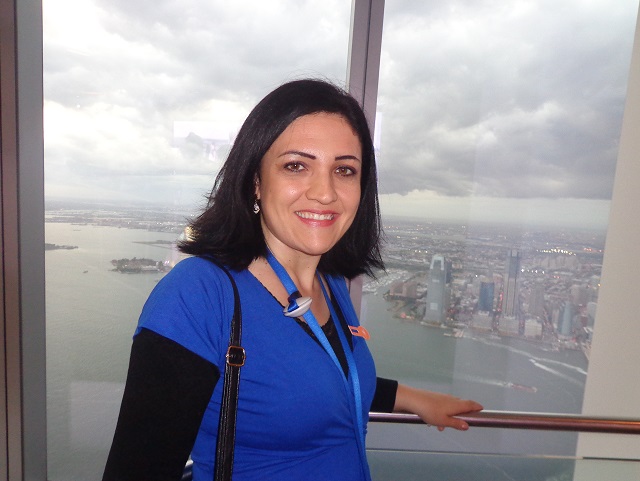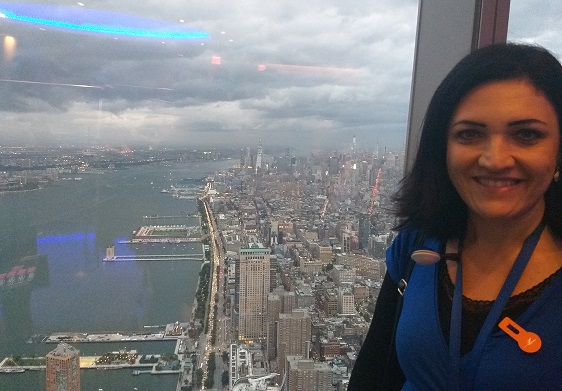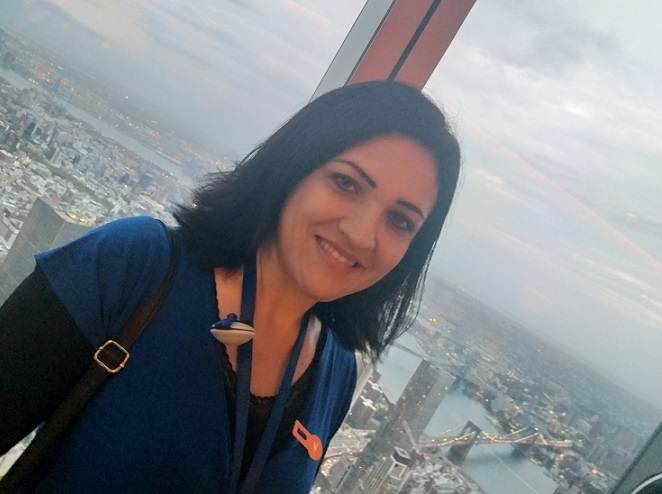Continuando nosso tour diário por Nova York, conforme mencionei no post: https://cadaviagemumabagagem.com/na-iluminada-e-poderosa-nova-york esse terceiro dia foi muito especial e emocionante, porque tivemos o privilégio de conhecer de perto da Estátua da Liberdade, esse ícone de Nova Iorque e ainda apreciar a vista da cidade do prédio mais alto dos Estados Unidos, o One World Trade Center, entre muitas outras aventuras. Vamos começar?
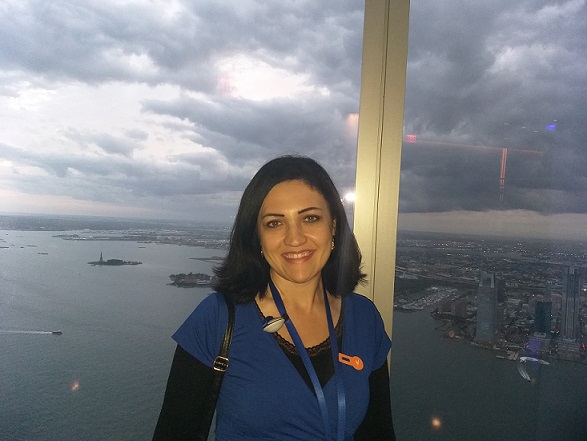
Roteiro do 3° dia: Applebee’s / Big Bus / Estátua da Liberdade / Ellis Island / One World Trade Center Station / Memorial e Museu Nacional 11 de Setembro / One World Observatory / Balada PHD
Como o dia de hoje promete muito passeio e diversão, vamos começar com um belo Café da Manhã no Applebee’s, um restaurante super aconchegante e com uma comida deliciosa. Fomos na unidade que fica em 234, West 42nd Street, mas existem outras na cidade e também espalhadas pelo mundo, inclusive no Brasil. Então se quiser conhecer antes de ir viajar, já pode aproveitar a oportunidade.

A rede Applebee’s foi criada em 1980 em Atlanta na Geórgia depois foi se expandindo por todo o mundo e chegou ao Brasil em 2004, com uma unidade em Moema em São Paulo, e posteriormente em outros estados também. Mais informações estão no site: www.restaurants.applebees.com/en-us/new-york/ e agora que já estamos alimentadas, vamos começar nossa maratona.

Com certeza uma das melhores formas de conhecer a cidade (principalmente se você estiver com pouco tempo) é utilizando os ônibus turísticos. Além do áudio-guia contar um pouco sobre cada ponto turístico, a comodidade de poder desembarcar e embarcar novamente pra continuar o percurso ajuda bastante, inclusive para se localizar na cidade e poder explorá-la por conta própria depois. Nosso Ônibus Hop-On, Hop-Off dessa vez foi o Big Bus New York, que tem dois roteiro clássicos a Rota Vermelha (Red Route), que explora a região mais central (downtown) e a Rota Azul (Blue Route), que explora a região mais acima (uptown), onde fica o Central Park.
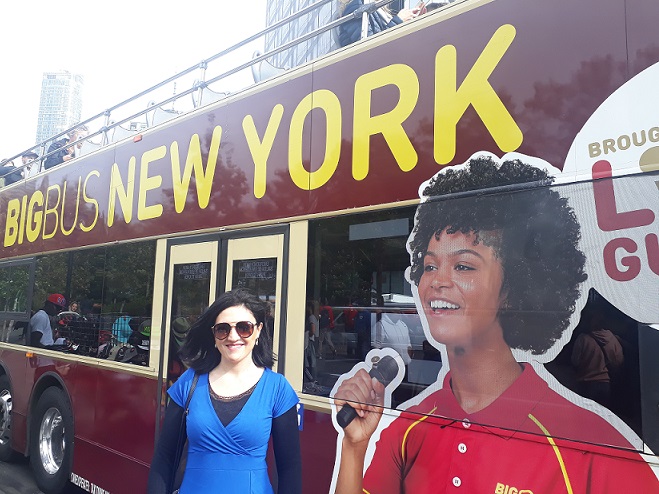
Você também tem a opção de escolher por quantos dias quer utilizar Big Bus New York, nós compramos o de dois dias, para poder aproveitar mais e descer em vários pontos para explorar. E como cortesia ganhamos um dia extra (o que nos ajudou bastante) e junto com esse tour, compramos também o noturno que já mencionei como foi no roteiro do 2° dia. Então é só prestar atenção nos horários que o ônibus vai passar naquele ponto e aproveitar bastante o passeio. E caso não queira descer o tour completo dentro do ônibus dura cerca de 90 minutos. Para saber mais detalhes é só acessar o site: www.bigbustours.com/en/new-york/new-york-bus-tours/
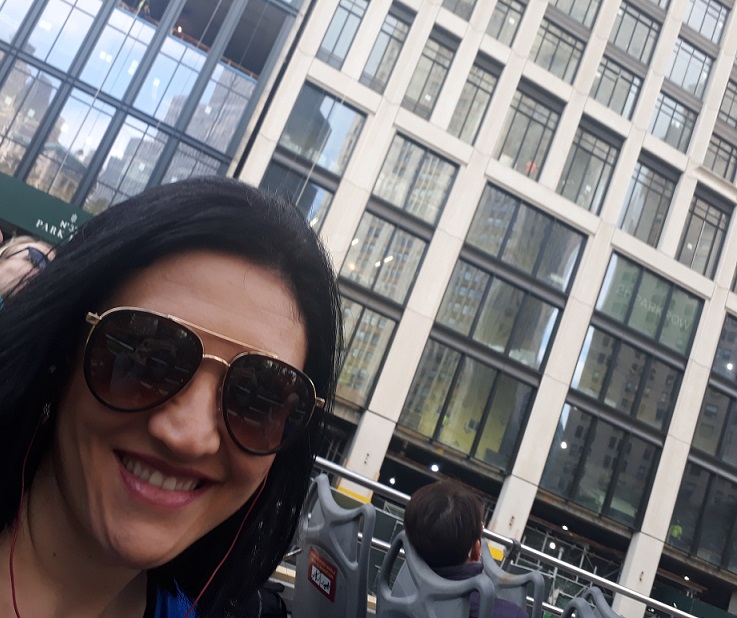
E uma das paradas do Big Bus é a da “Estátua da Liberdade”, que na verdade é no Castle Clinton, onde fica o ponto de acesso para o Ferry Boat (ou Balsa) que nos levará até a Estátua. Assim como fizemos em Toronto, aqui nós compramos pela internet o “CityPass New York”, que é um combo com ingressos para seis atrações em Nova York, entre elas o Ferry Boat de Acesso à Estátua da Liberdade e a Ellis Island (que também visitamos e vou te contar como foi mais pra frente na postagem). Para saber mais informações sobre o CityPass New York e também valores atuais (na época, pagamos US$ 132 por pessoa) é só acessar o site: https://pt.citypass.com/new-york . Vale lembrar que antes de pegar a balsa todos os passageiros precisam passar por uma checagem de segurança com raio-X e detector de metais, bem parecida com a dos aeroportos (isso passou a ser recorrente em vários pontos turísticos da cidade depois dos atentados de 11 de setembro).
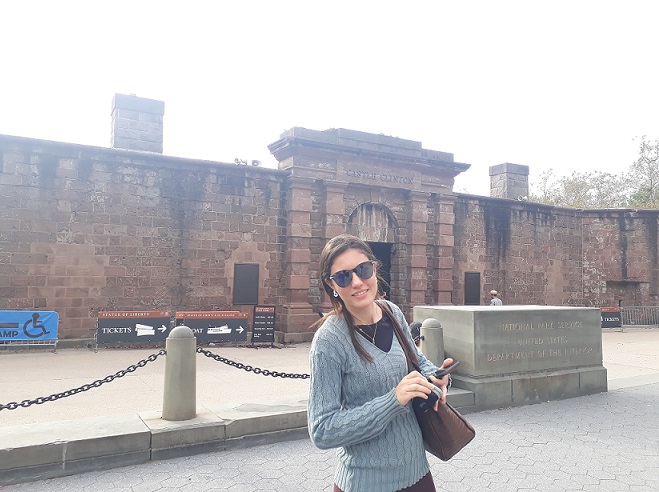
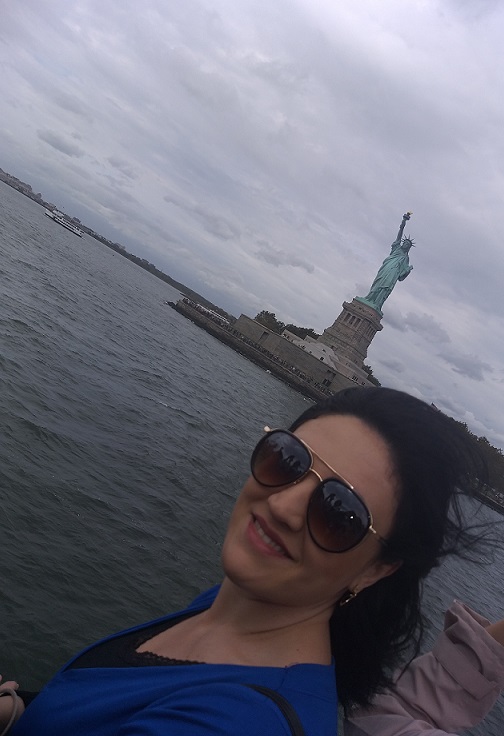
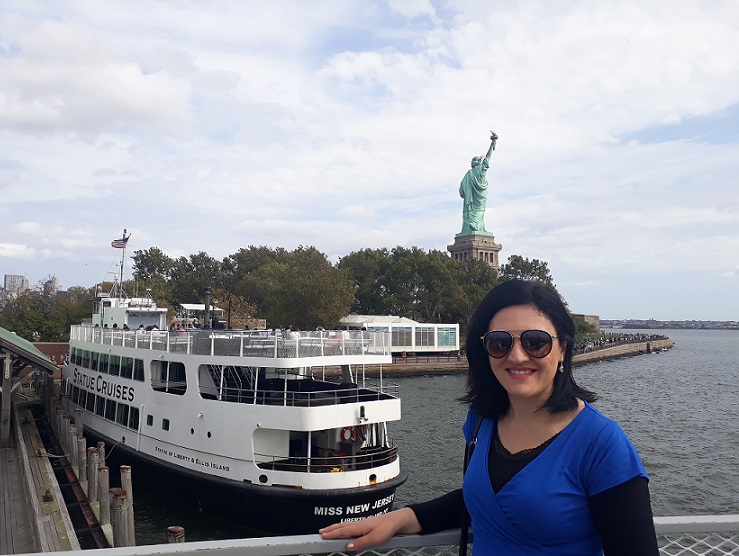
Realmente não tem como falar de Nova York e não lembrar dela, a Poderosíssima e Absoluta “The Statue of Liberty” (ou A Estátua da Liberdade, um dos principais cartões-postais e ícones da cidade, que fica na Liberty Island (ou Ilha da Liberdade) e tem como nome oficial “A Liberdade Iluminando o Mundo”.
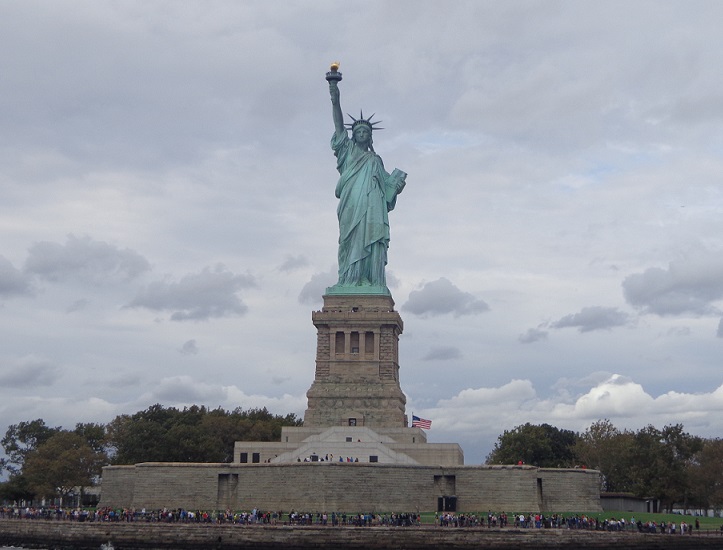
A Estátua da Liberdade foi inaugurada (ou “dedicada” como eles preferem dizer) em 28 de outubro de 1886 e foi um presente da França aos Estados Unidos, como forma de agradecimento pela ajuda em uma batalha contra a Inglaterra. A Estátua é feita de cobre e foi projetada em estilo neoclássico pelo escultor francês Frédéric Auguste Bartholdi e sua estrutura metálica interna que dá toda a sustentação foi construída pelo também francês Gustave Eiffel (o mesmo idealizador da Torre Eiffel de Paris – se você ainda não viu ou quer rever o post sobre a França é só acessar o link para saber mais sobre a Torre e os outros pontos turísticos de lá: https://cadaviagemumabagagem.com/os-encantos-da-franca/ ).
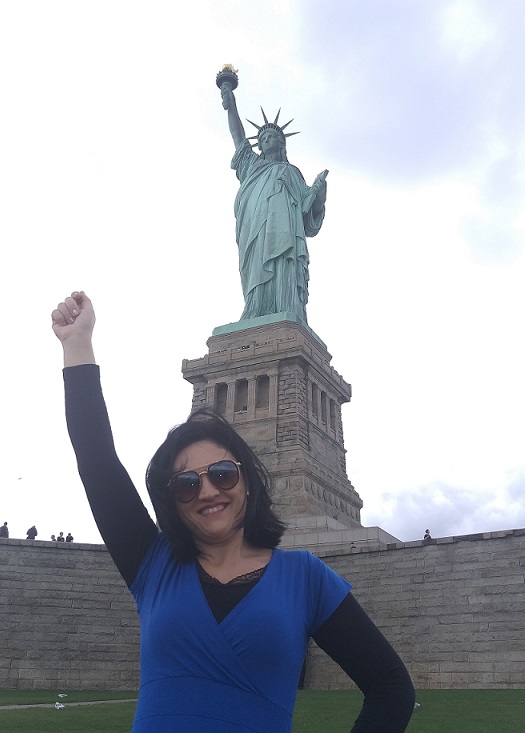
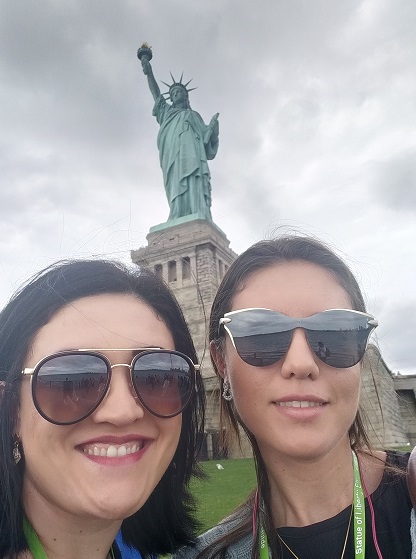
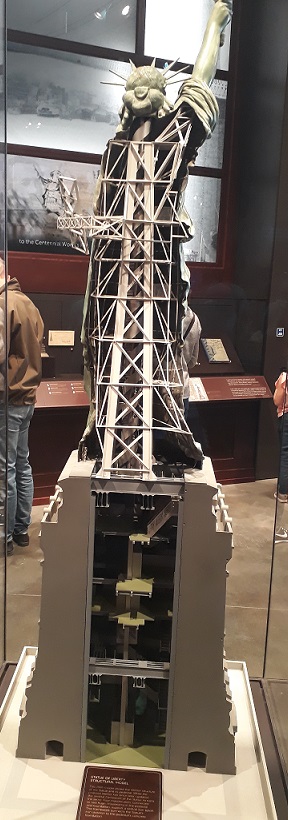
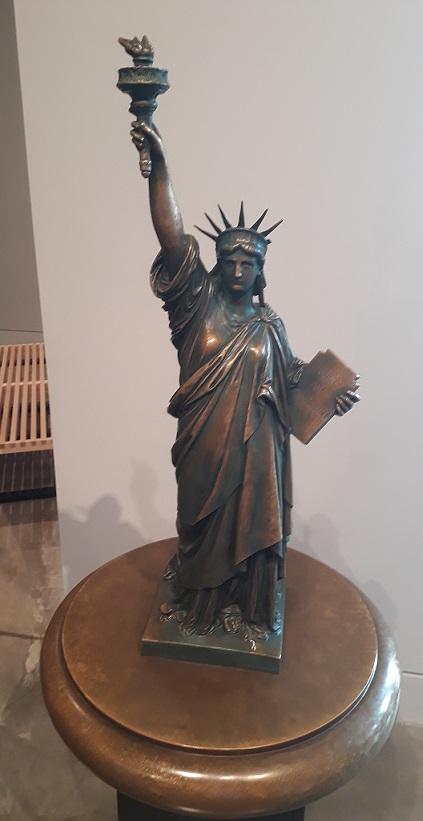
A altura total do Monumento chega a 92,9 m, sendo que 46,9 são da base e 46 m são da Estátua da Liberdade em si. Muitas pessoas acabam se decepcionando um pouco por conta dessa altura, imaginando que fosse mais alta em comparação aos grandes edifícios da cidade, porém nada que desabone seu encanto, principalmente em se tratando de ser a representação da deusa romana da liberdade “Libertas”, carregando uma tocha e uma tábua onde está inscrita a data da Declaração de Independência dos Estados Unidos (4 de Julho de 1776) e aos seus pés está uma corrente quebrada. E mais uma curiosidade: a Estátua foi construída em cobre e possuía uma coloração dourada, mas por reações químicas ao passar do tempo adquiriu a cor atual.
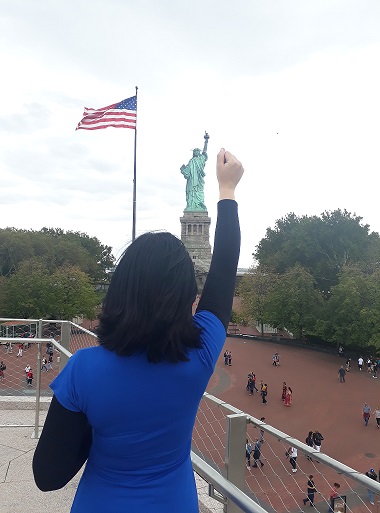
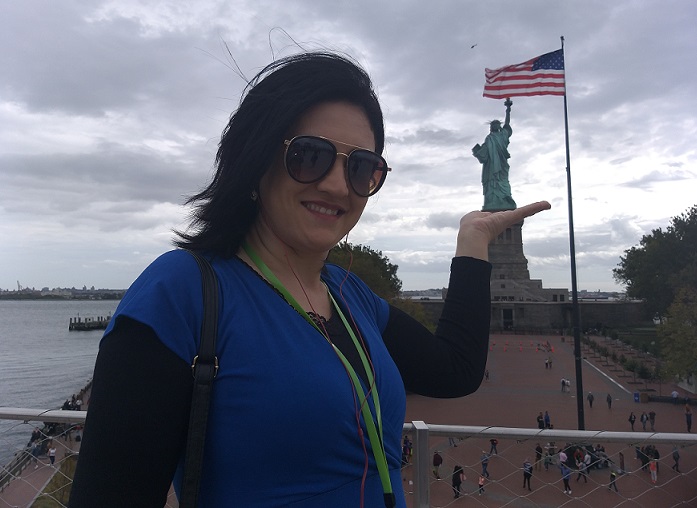
Na Liberty Island,além de contemplar a Estátua da Liberdade, você pode apreciar a linda Vista de Manhattan do Mirante e visitar o Museu da Estátua que nos conta os detalhes da construção do monumento e tem um acervo de peças interessantíssimas, como uma réplica da tocha em tamanho natural entre outras. Também é possível subir até a Coroa, mas não dá pra comprar lá na hora, tem que reservar com bastante antecedência no site da Statue Cruises (www.statuecruises.com), eu não sabia e acabei não conseguindo subir, mas já está na minha lista para a próxima viagem a Nova York, se você for, nos conte como foi nos comentários.
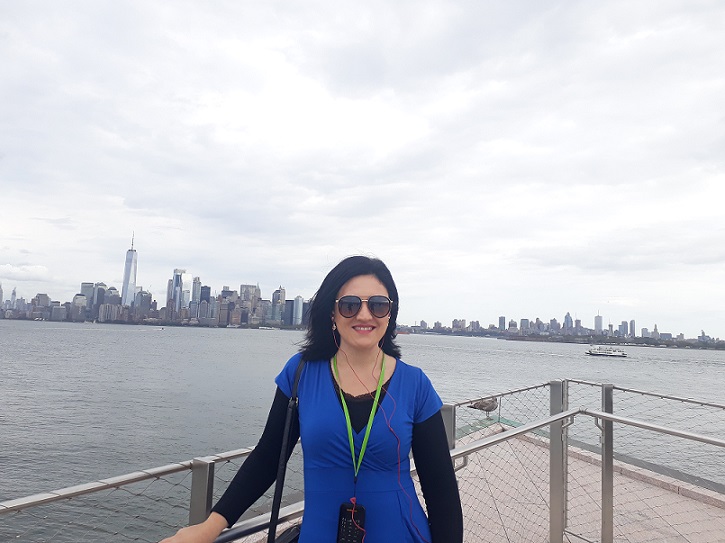
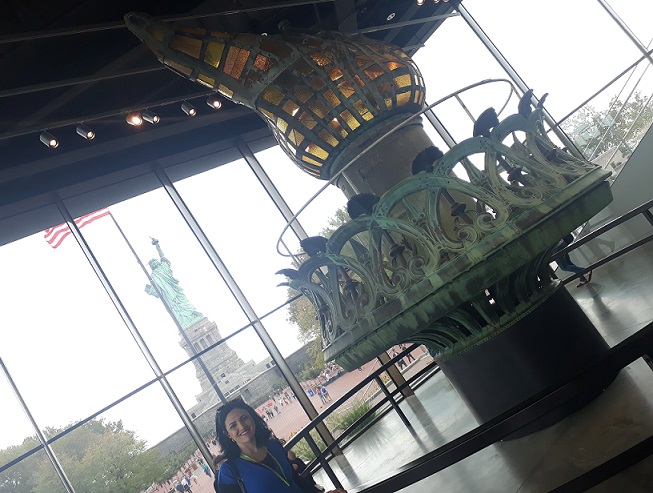
Com a tocha 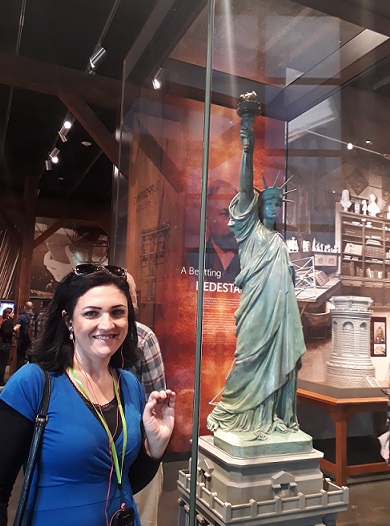
e a maquete da Estátua
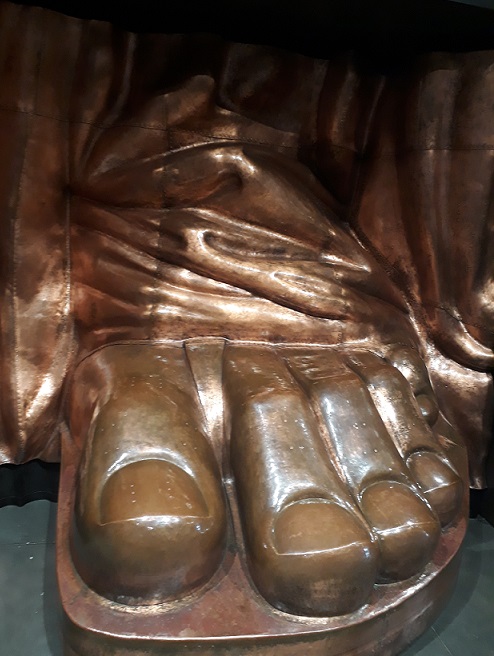
Detalhe do Pé 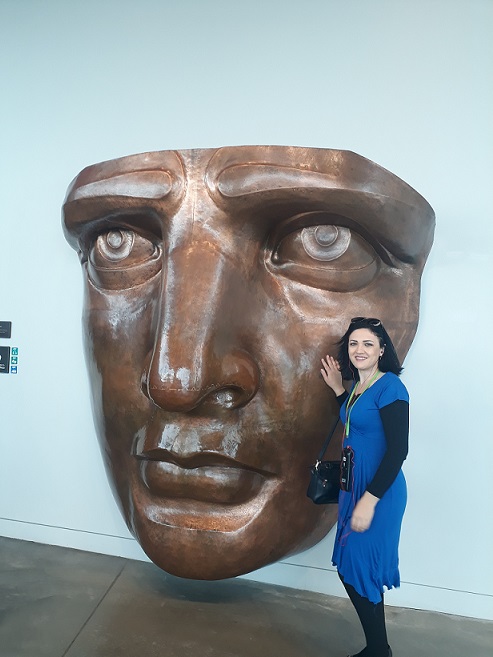
e do Rosto expostos no Museu
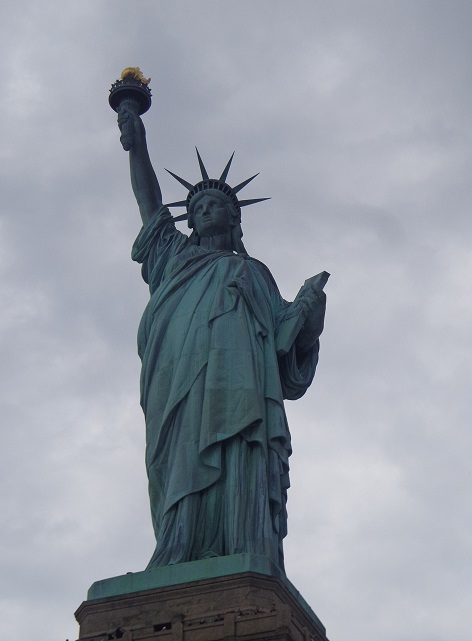
Vale lembrar que a Estátua da Liberdade foi designada como Patrimônio Mundial da Unesco em 1984 e mais informações estão disponíveis no site: www.nps.gov/stli/index.htm
Saindo dali, pegamos o Ferry Boat e fomos visitar a Ellis Island (ou Ilha Ellis), que fica próximo e faz par do Monumento Nacional da Estátua da Liberdade. Essa Ilha era a principal entrada de imigrantes nos Estados Unidos no século XIX e início do século XX e em 1990 se transformou em museu.
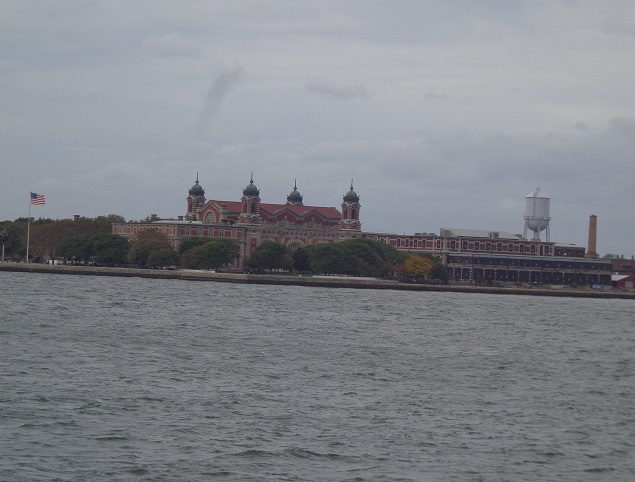
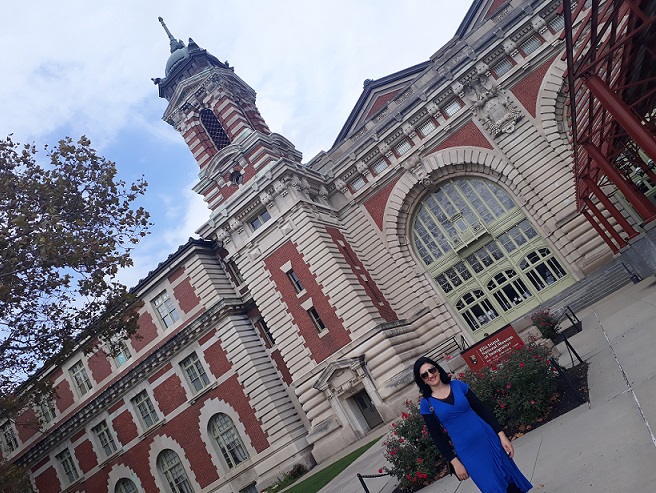
Na Ellis Island acontecia a triagem, tanto médica quanto de documentação, para verificar se os imigrantes poderiam permanecer no território americano ou não. Esse grande salão era chamado de Sala de Registros, e era o local onde acontecia a primeira inspeção e os registros e chegou a receber mais de 5 mil pessoas por dia.
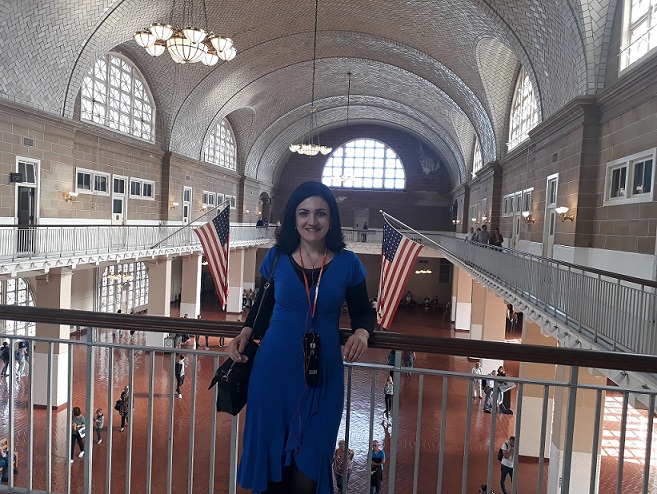
O acervo histórico da Ellis Island está distribuído pelos três andares do museu, onde é possível ver os instrumentos médicos da época, os dormitórios, objetos pessoais, utensílios de cozinha, além de muitas fotos e outros objetos. E para saber mais informações é só acessar o site: https://www.nps.gov/elis/index.htm
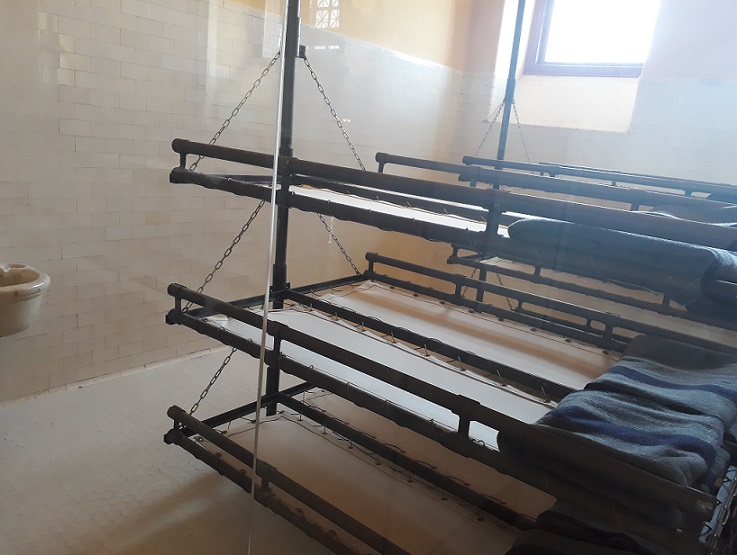
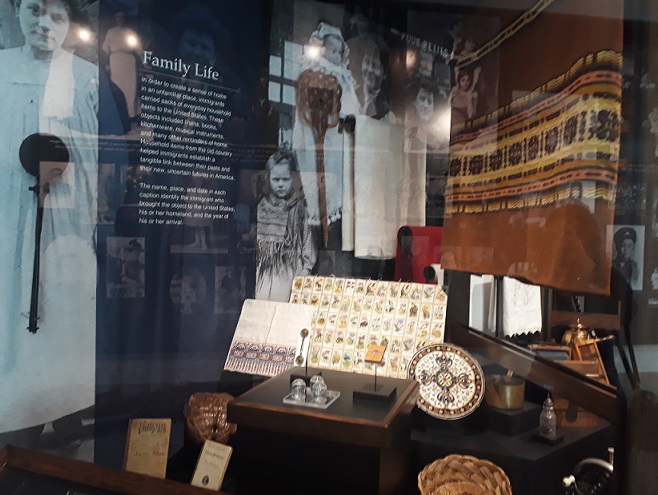
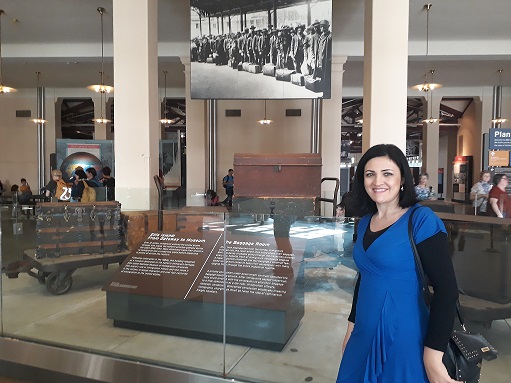
Depois de visitar a Ellis Island, pegamos o Ferry Boat e voltamos para Manhattan, onde fomos conhecer a One World Trade Center Station (ou Estação “One World Trade Center”) que foi reinaugurada em 2016 e apesar de ter como nome oficial “World Trade Center Transportation Hub” ficou conhecida como Estação The Oculus. Ela possui um design bem futurista e foi projetada pelo arquiteto espanhol Santiago Calatrava (o mesmo idealizador do Museu do Amanhã do Rio de Janeiro).
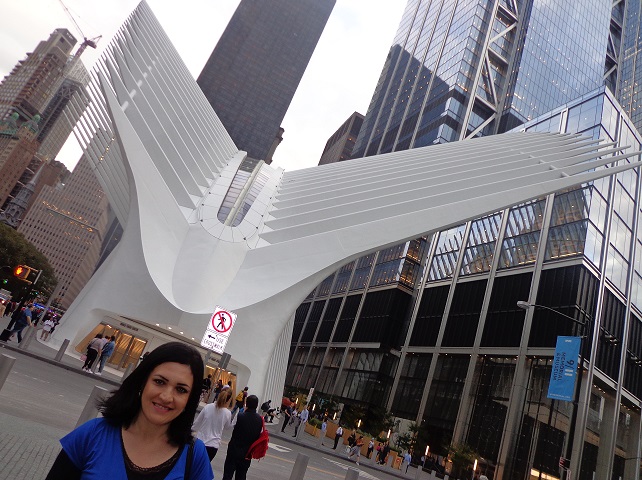
Se exteriormente, a One World Trade Center Station / The Oculus já impressiona, internamente não é diferente, ela é enorme, liga trens, metrô e o sistema PATH, além de abrigar até um shopping center, isso mesmo: o Westfield World Trade Center, que é um dos maiores da cidade. Para saber mais detalhes é só acessar o site: https://www.westfield.com/westfieldworldtradecenter
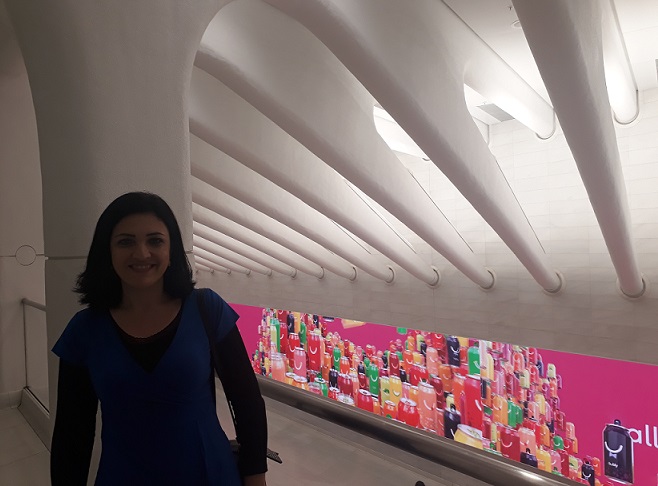
No interior da One World Trade Center Station 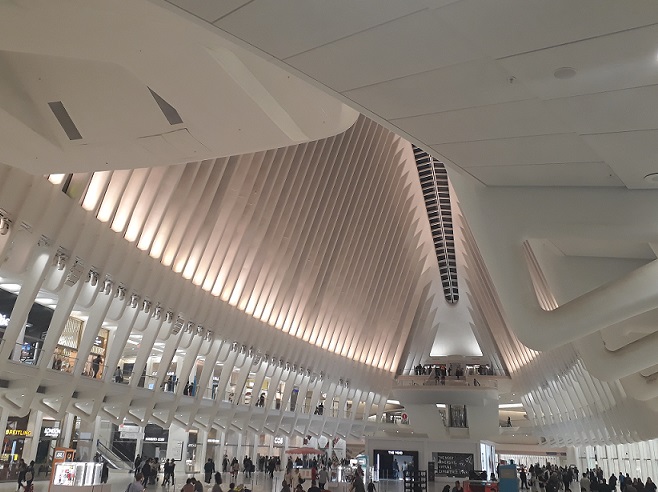
Já que estamos falando de Estação de Trem, não poderia deixar de citar o Metrô de Nova York, que é famoso por funcionar 24 horas por dia todos os dias e ser um dos mais extensos e antigos do mundo. Foi inaugurado em 1904 e atualmente conta com um total 24 linhas, distribuídas em 468 estações. Na ilha de Manhattan se destacam as linhas 1,2 e 3 – Vermelha; 4, 5 e 6 – Verde e A, C e E – Azul. Uma dica pra te ajudar a se locomover utilizando esse meio de transporte é pegar um mapa no hotel ou nas estações ou então nos aplicativos de celular para já saber exatamente qual a linha certa pra chegar ao seu destino. Nesse link tem o mapa da rede metropolitana de toda a cidade, (incluindo Manhattan, Brooklyn, The Bronx e Quens) pra você ter uma ideia de como é: https://new.mta.info/map/5256

Ao lado da Estação “One World Trade Center”, fica “The National September 11 Memorial & Museum”, que é o complexo formado pelo “Memorial Nacional 11 de Setembro” e pelo “Museu”. O Memorial 11 de Setembro foi inaugurado em 11 de setembro de 2011 como uma forma de homenagear as vítimas do atentado terrorista de 11 de setembro de 2001 que destruiu as Torres Gêmeas. O projeto do Memorial é do arquiteto Michael Arad e do paisagista Peter Walker e consiste em duas piscinas quadradas com cascatas (onde eram as torres), cercada por árvores em uma grande praça. A simbologia desse projeto é bem tocante, pois as cascatas seriam as vidas perdidas caindo no vazio deixado pela sua ausência e nas bordas das piscinas estão gravados os nomes das 2.977 vítimas do atentado de 11 de setembro e de mais seis vítimas do atentado com um carro-bomba ao World Trade Center em 26 de fevereiro de 1993.
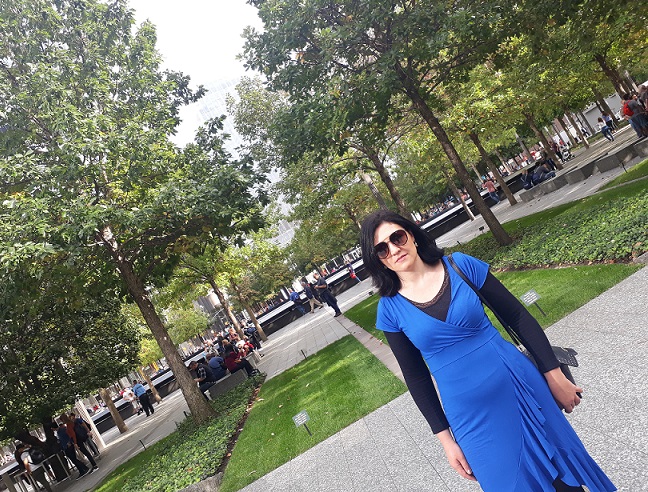
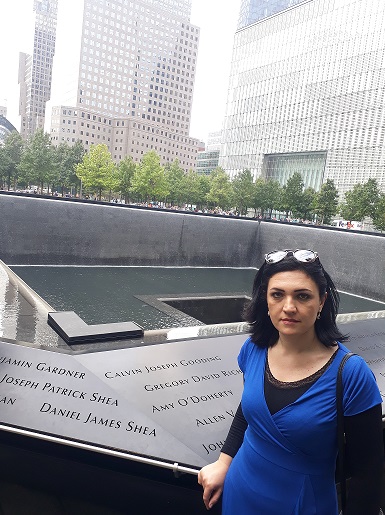
Piscina… 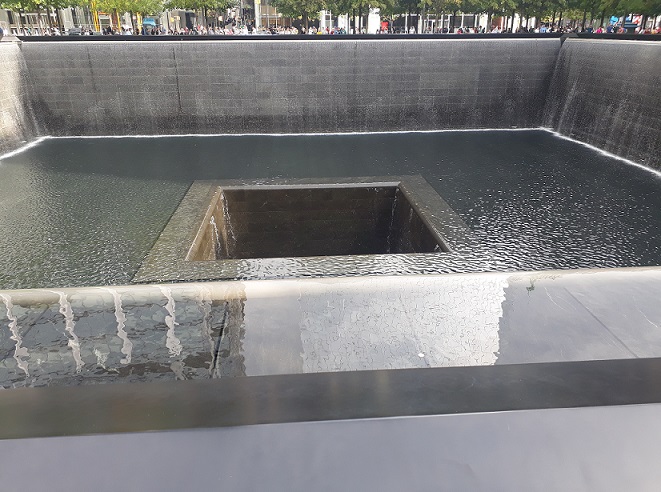
…em detalhe
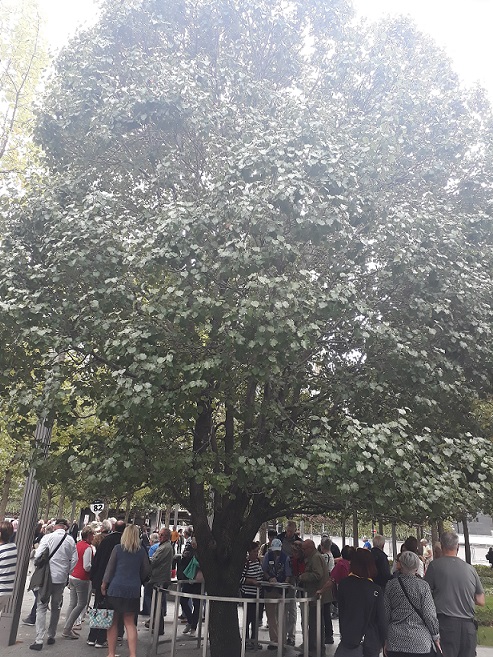
Realmente parte o coração relembrar essa tragédia e saber que ela ainda está muito presente na memória e na vida dos novaiorquinos, é uma ferida que não cicatrizou e fez com que fossem intensificados os protocolos de segurança nos principais pontos turísticos da cidade, com raios-X e detector de metais no acesso a eles. Mas em meio à dor, também surge a esperança e um exemplo disso é a “Survivor Tree”, ou Árvore Sobrevivente, uma pereira “Callery” que foi muito danificada quando do ataque terrorista, ficando apenas um galho vivo, mas foi removida dos escombros e levada para reabilitação, voltando ao local atual em 2010, simbolizando assim a resiliência, o renascimento e a superação!!! A visita ao Memorial 11 de Setembro (onde estão a Árvore Sobrevivente e as Piscinas que citei anteriormente) é gratuita e mais informações estão no site: https://www.911memorial.org/
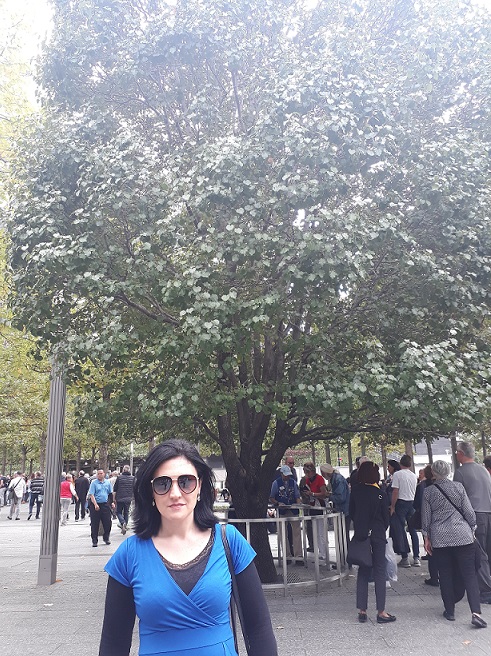
Também em homenagem às vítimas do atentado de 11 de setembro de 2001 foi criado o Museu Nacional 11 de Setembro, que foi inaugurado em 2014 com um acervo de mais de 10 mil peças incluindo colunas de aço retorcidas, carro de bombeiro destruído pela queda da segunda torre, entre muitos outros objetos.
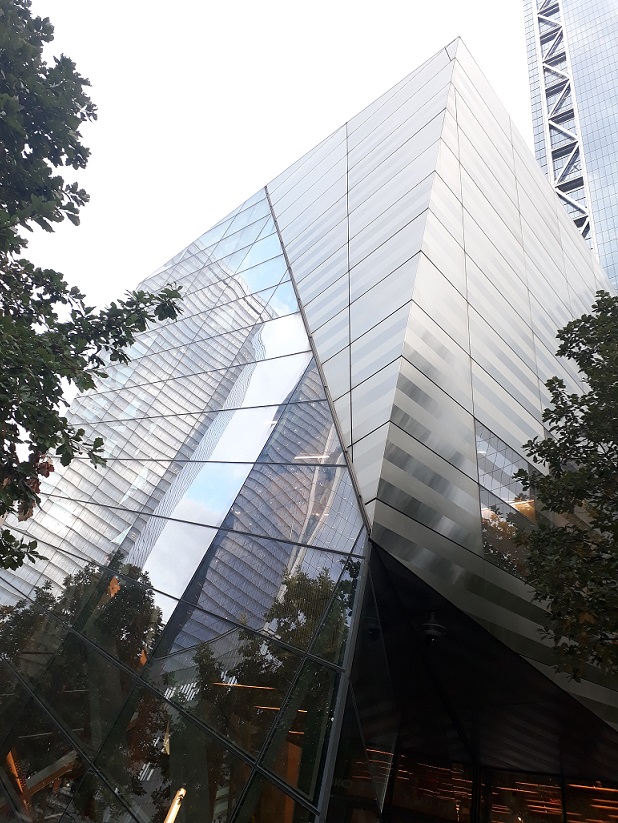
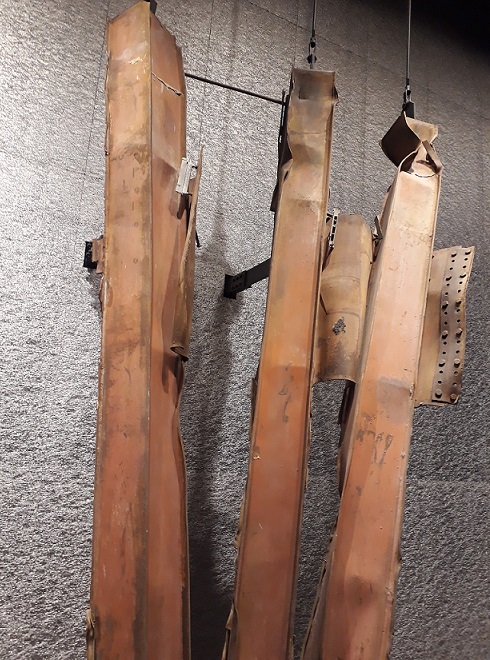
Colunas retorcidas 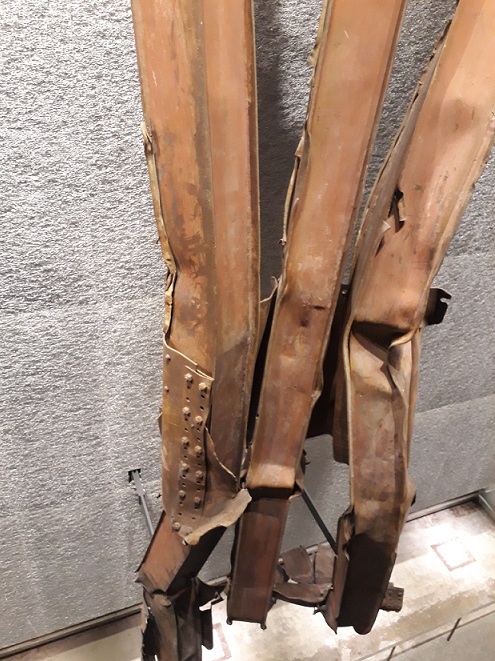
que sobraram das Torres Gêmeas
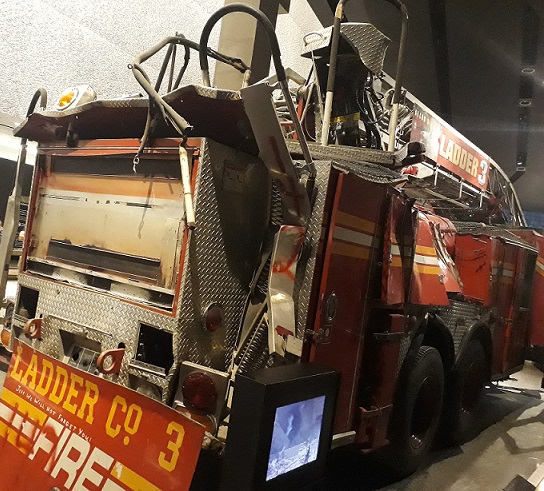
Carro de bombeiro… 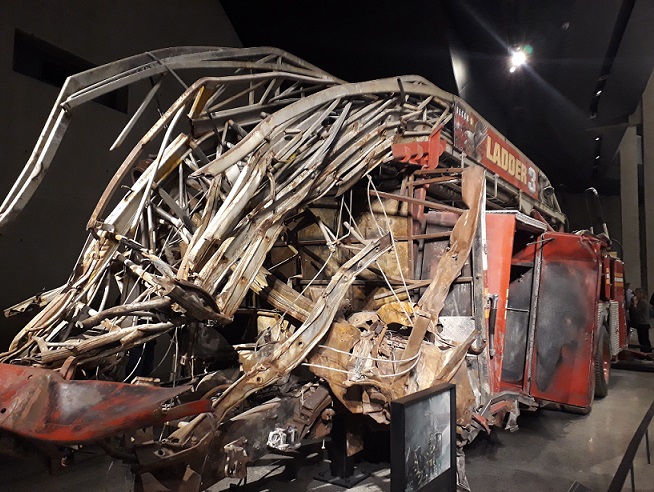
atingido pela queda da Segunda Torre
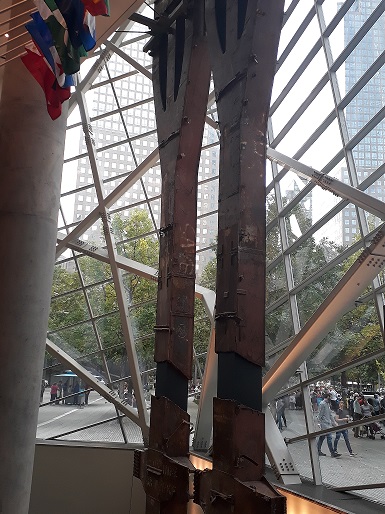
O Museu 11 de Setembro foi projetado pela Empresa de Arquitetura Davis Brody Bond e ocupa uma área de 10 mil m² a 21m abaixo do solo, tendo um acesso através de um pavilhão no qual se encontram duas colunas resgatadas das Torres Gêmeas e também fotos e explicações detalhadas sobre o atentado, inclusive quadros das Torres Gêmeas (como eram antes e durante o atentado).
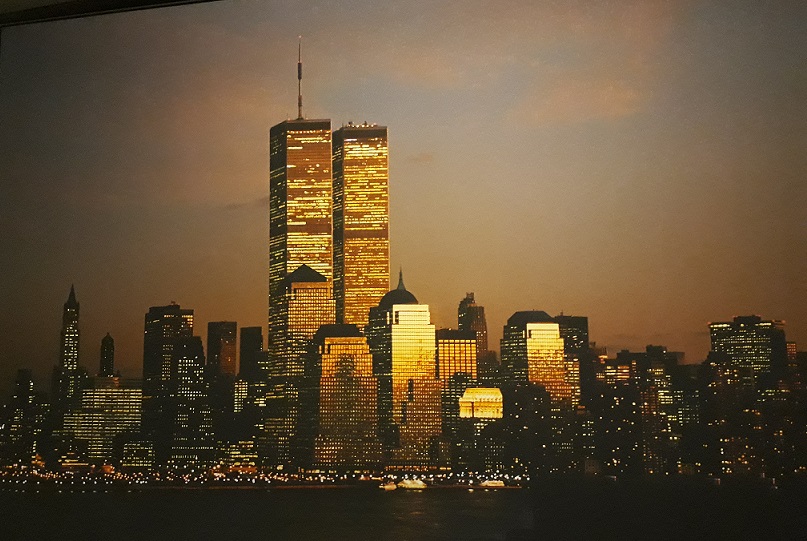
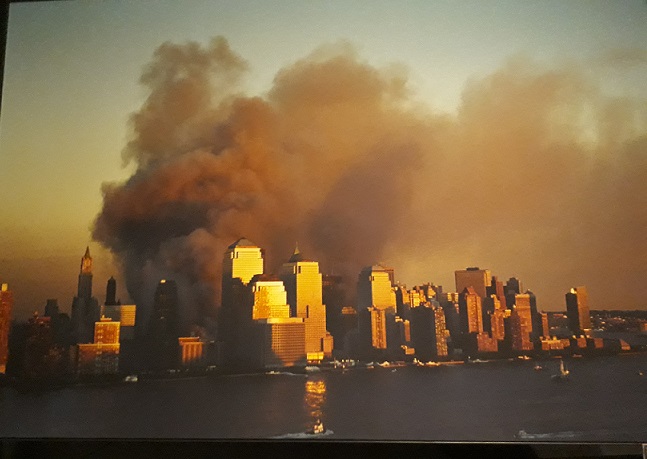
E descendo mais um pouco chegamos na sala onde tem um muro de contenção do Rio Hudson, que permaneceu preservado mesmo com os ataques e a “Última Coluna” que foi retirada dos escombros em Maio de 2002. Para saber mais detalhes sobre o Museu 11 de Setembro é só acessar: https://911tributemuseum.org/
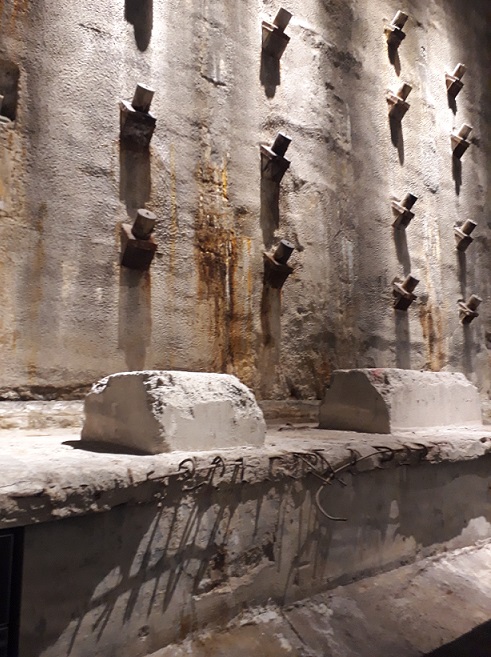
Muro de contenção 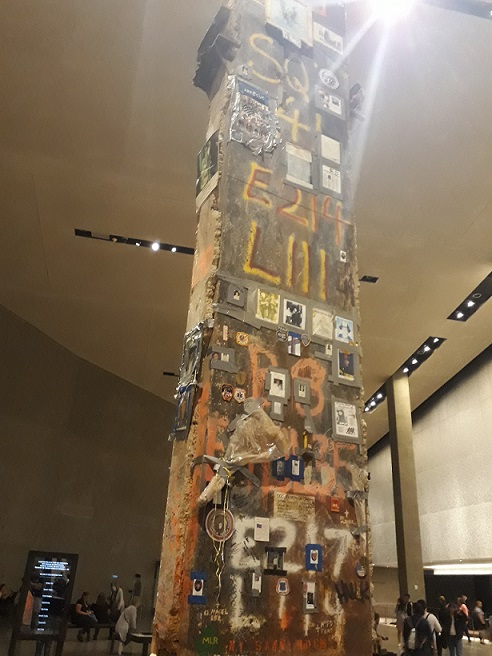
Última coluna
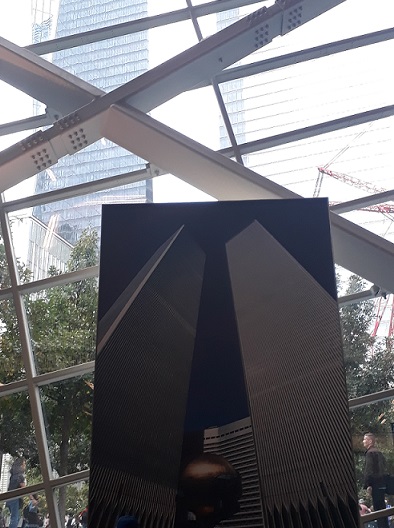
O ingresso para o Museu Nacional 11 de Setembro estava incluso no nosso CityPass New York, mas se você for por conta, pode comprar direto pelo site: https://www.911memorial.org/visit/visit-museum-1 e custa US$26 (mas tem alguns combos e descontos especificados no site).
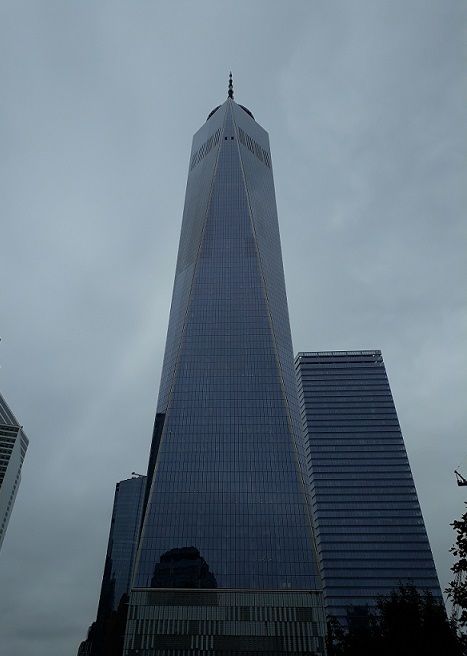
Agora para desanuviar um pouco o ar de tristeza e pesar da visita ao Memorial e ao Museu, nada melhor do que contemplar uma vista linda da cidade do One World Observatory, que fica no One World Trade Center (World Trade Center 1 – WTC 1), o icônico prédio do novo complexo do World Trade Center, que foi inaugurado em 2014 e é edifício mais alto dos Estados Unidos e um dos mais altos do mundo, com uma altura de mais de 540m. Para saber mais detalhes sobre o WTC1 é só acessar: https://www.wtc.com/about/buildings/1-world-trade-center
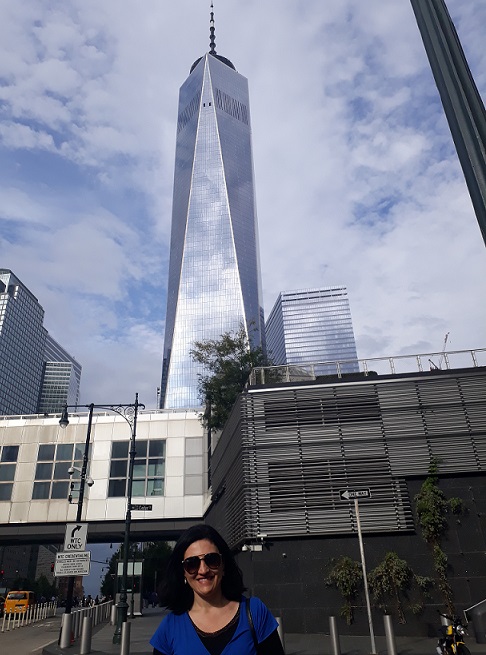
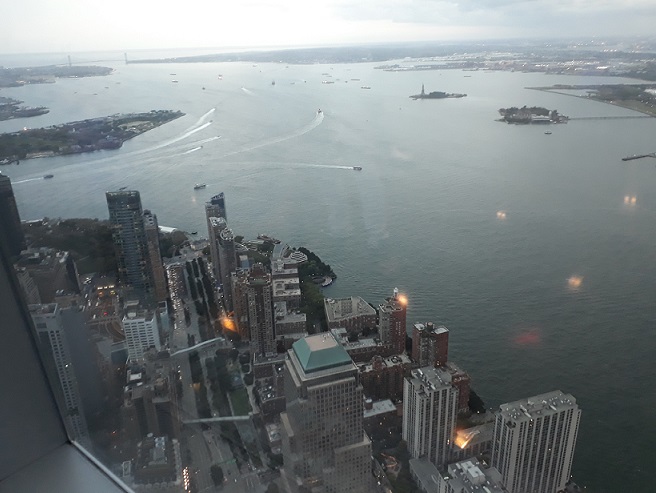
O One World Trade Center foi projetado pelo arquiteto David Childs, em estilo pós-moderno e conta com 104 andares, sendo que 69 destes são destinados a escritórios, e outros para restaurantes e o deck de observação que é o One World Observatory, ocupando os andares 100°, 101° e 102°, e a subida até esse último pelos elevadores “Sky Pods” dura apenas um minuto. Isso mesmo, um minuto para chegar ao 102° andar do prédio mais alto da cidade e contemplar essa vista encantadora e ainda conhecendo um pouco mais sobre a história de Nova York nesse trajeto.
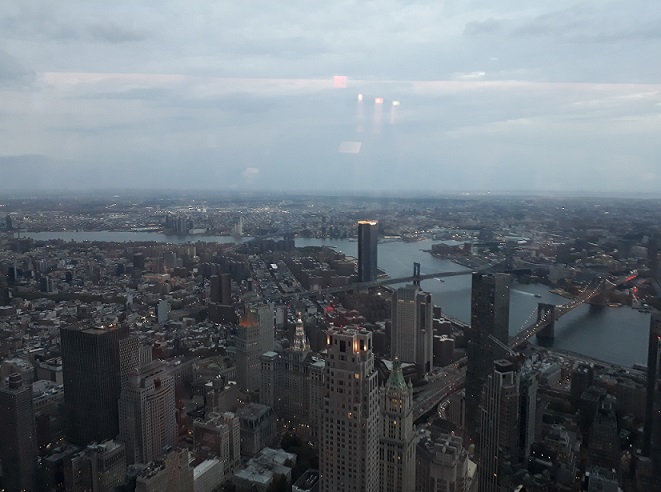
Chegando no deck de observação do One World Observatory, somos recepcionados por um filme curtinho no See Forever Theater falando mais um pouco sobre a cidade e ao final deste a tela sobe e se abre a linda linha do horizonte de Nova York, com uma vista espetacular da cidade. Como o observatório é fechado por vidros e coberto, você pode apreciar a paisagem independentemente do tempo lá fora. Para saber mais detalhes é só acessar o site: https://www.oneworldobservatory.com/en-US
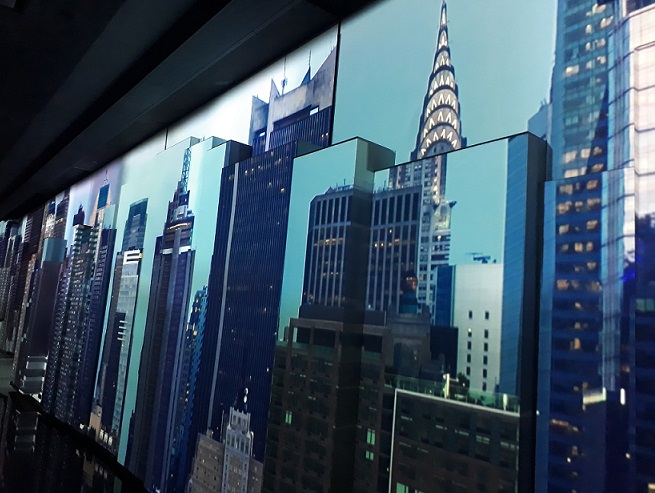
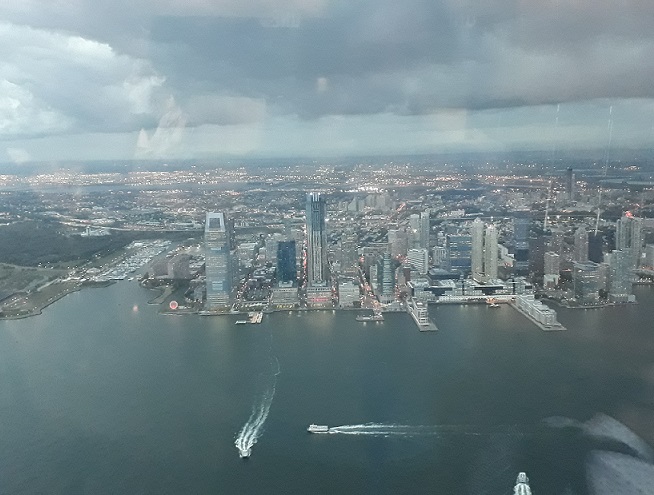
A minha sugestão é que você já compre o ingresso para visitar o One World Observatory com antecedência para garantir que você consiga visitar no dia que programou no seu roteiro (dica super preciosa do nosso dermatologista Dr. Renato que facilitou a nossa vida) e também pegue um horário no final da tarde, assim aproveita a vista durante o dia e também à noite, que foi o que fizemos. A compra dos tickets pode ser feita pelo site oficial do One World Observatory: https://www.oneworldobservatory.com/en-US/buy-tickets . E para ver um pouquinho de como foi nossa experiência por lá é só acessar o link do vídeo que postei no nosso Canal do Youtube: https://youtu.be/soDYfPkC3zc
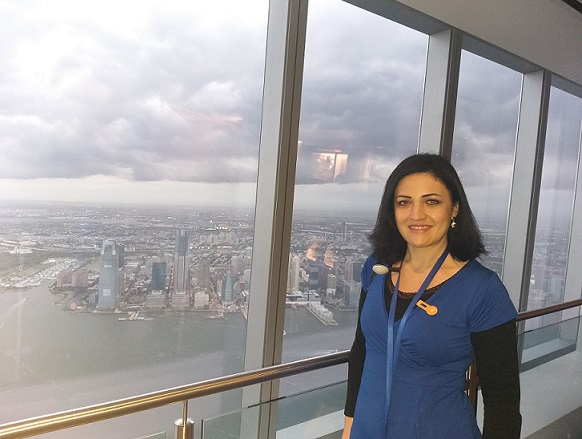
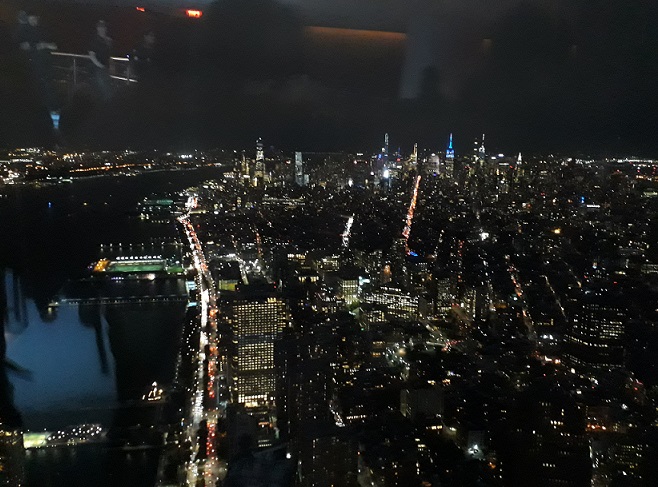
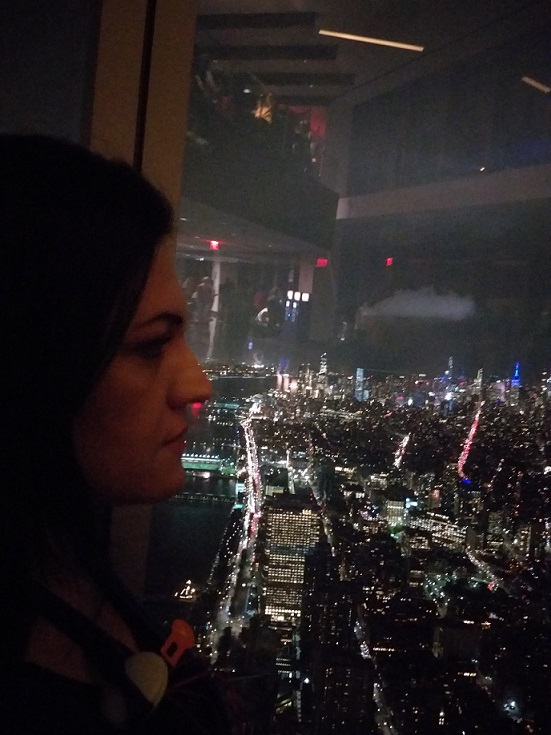
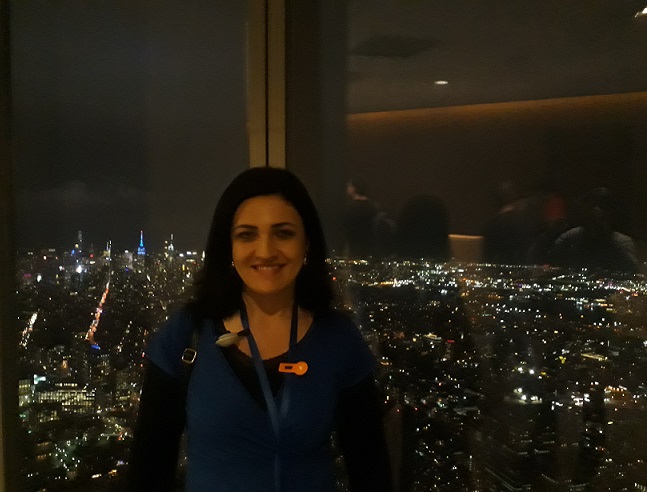
E para coroar ainda mais essa visita incrível, você pode tomar um drink ou até jantar no One Dine Restaurant & Bar com a Nova York Iluminada de cenário ao fundo. Fala a verdade, é realmente uma experiência inesquecível, não é mesmo? Você pode reservar com antecedência e também ter descontos nos drinks dependendo do ingresso que você compra para a visita ao One World Observatory. Mais detalhes estão no site: https://www.oneworldobservatory.com/en-US/bar-restaurant

Está pensando que a noite acabou? Ainda não… Pra realmente fechar com chave de ouro mais uma noite em Nova York fomos curtir uma baladinha numa das boates mais tops da cidade (dica maravilhosa da nossa Querida Amiga Valéria): PHD Lounge, que fica num terraço no 12º andar, tem uma decoração sofisticada inspirada nos anos 80 e nos proporciona uma vista linda do Empire State Building e da cidade toda iluminada (só pra reforçar o título desse post ?) ao som de muita música eletrônica e house. Merece um brinde, não é mesmo? A PHD Lounge fica em 355 West 16th Street, Chelsea emais informações estão no site: https://taogroup.com/venues/phd-lounge-new-york/
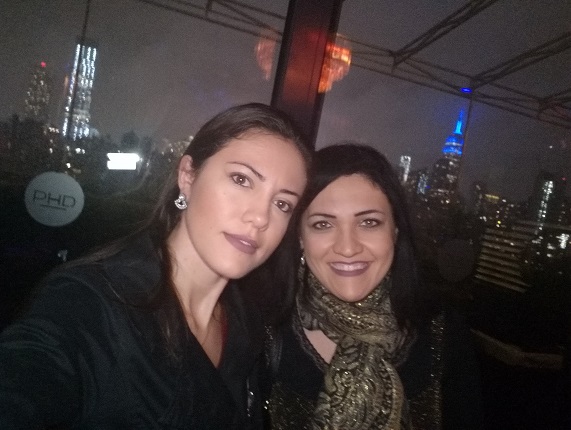


E Viva Nova York!!!! 
E nesse clima de balada, vamos encerrado a postagem do nosso terceiro dia de passeios em Nova York!!! Muito obrigada pela sua companhia e te espero nas aventuras dos próximos dias!!! Se você gostou desse post, compartilhe com seus amigos para que possam se divertir também, e siga nossas redes sociais para saber em primeira mão as novidades: Instagram (@cadaviagemumabagagem) e Facebook (https://www.facebook.com/cadaviagemumabagagem/ ) e se inscreva no nosso canal do Youtube (Cada Viagem uma Bagagem): https://www.youtube.com/channel/UC5Q29-MYuWjvPH__wWhF42A . Lembrando que para ver o Roteiro Completo do Dia 4, é só acessar o link: https://cadaviagemumabagagem.com/na-iluminada-e-poderosa-nova-york-dia-4/ , onde vamos nos sentir em um verdadeiro set de filmagens, visitando vários cenários de filmes, como o Central Park, Museu de História Natural, entre outros…

In Illuminated and Powerful New York – Day 3
Continuing our daily tour of New York, as I mentioned in the post: https://cadaviagemumabagagem.com/na-iluminada-e-poderosa-nova-york/ , this third day was very special and exciting, because we had the privilege to meet up close to the Statue of Liberty, that icon of New York and still enjoy the city view from the tallest building in the United States, the One World Trade Center, among many other adventures. Let’s start?

Day 3 Itinerary: – Applebee’s / Big Bus / Statue of Liberty / Ellis Island / One World Trade Center Station / National September 11 Memorial and Museum / One World Observatory / Ballad PHD
As today promises a lot of fun and outings, let’s start with a nice breakfast at Applebee’s, a super cozy restaurant with delicious food. We went to the unit at 234, West 42nd Street, but there are others in the city and also spread around the world, including Brazil. So if you want to know before you travel, you can already take the opportunity.

Applebee’s network was created in 1980 in Atlanta, Georgia, and then expanded all over the world and arrived in Brazil in 2004, with a unit in Moema in São Paulo, and later in other states as well. More information is on the website: www.restaurants.applebees.com/en-us/new-york/ and now that we are already fed up, let’s start our marathon.

Certainly one of the best ways to get to know the city (especially if you are short of time) is using the tourist buses. In addition to the audio guide telling a little about each tourist spot, the convenience of being able to disembark and embark again to continue the route helps a lot, including to locate yourself in the city and be able to explore it on your own later. Our Hop-On, Hop-Off Bus this time was the Big Bus New York, which has two classic routes, the Red Route, which explores the most central region (downtown) and the Blue Route, which explores the uppermost region (uptown), where Central Park is located.

You also have the option to choose how many days you want to use Big Bus New York, we bought the two-day one, so you can enjoy more and get off at various points to explore. And as a courtesy, we won an extra day (which helped us a lot) and along with this tour, we also bought the night that I already mentioned as it was in the 2nd day itinerary. So just pay attention to the times that the bus will pass at that point and enjoy the ride a lot. And if you don’t want to get off the complete tour on the bus, it takes about 90 minutes. To find out more details just access the website: www.bigbustours.com/en/new-york/new-york-bus-tours/

And one of the stops on the Big Bus is the “Statue of Liberty”, which is actually at Castle Clinton, where is the access point for the Ferry Boat that will take us to the Statue. Just like we did in Toronto, here we bought the “CityPass New York” online, which is a combo with tickets to six attractions in New York, including the Ferry Boat for Access to the Statue of Liberty and Ellis Island (which we also visited and I’ll tell you how it went later in the post). To find out more about CityPass New York and current prices (at the time, we paid $ 132 per person), just go to the website: https://pt.citypass.com/new-york . It is worth remembering that before taking the ferry, all passengers need to go through an X-ray security check and metal detector, very similar to the one at the airports (this became a recurrent feature in several tourist spots in the city after the 11 attacks). of September).

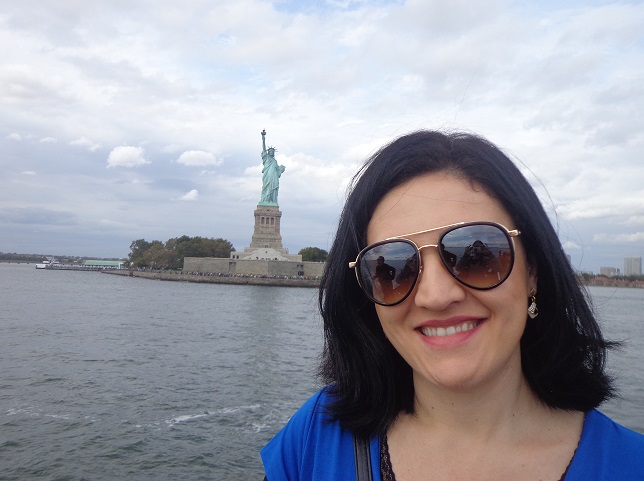
On the ferry boat 
And arriving at Liberty Island
There is really no way to talk about New York and not remember it, the Powerfull and Absolute The Statue of Liberty, one of the main postcards and icons of the city, which is on Liberty Island and has as its official name “Liberty Illuminating the World”.

Statue of Liberty was inaugurated (or “dedicated” as they prefer to say) on October 28, 1886 and was a gift from France to the United States, as a way of thanking them for their help in a battle against England. The statue is made of copper and was designed in a neoclassical style by the French sculptor Frédéric Auguste Bartholdi and its internal metallic structure that gives all the support was built by the also French Gustave Eiffel (the same creator of the Eiffel Tower in Paris – if you haven’t seen it yet or want to review the post about France, just access the link to learn more about the Tower and the other tourist attractions there: https://cadaviagemumabagagem.com/os-encantos-da-franca/ ).
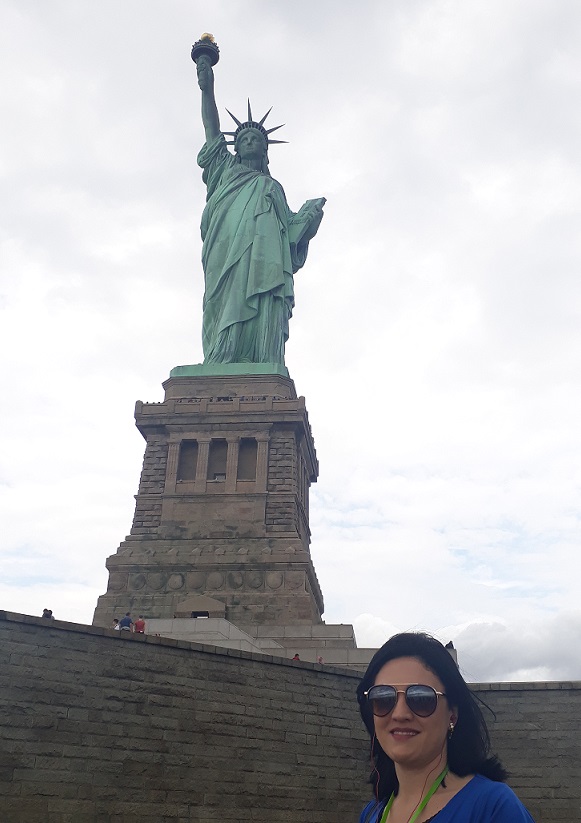
Statue of Liberty and Me 
And My Sister


The total height of the Monument reaches 304 ft, of which 153 ft are from the base and 150ft are from the Statue of Liberty itself. Many people end up being a little disappointed because of that height, imagining that it was taller in comparison to the big buildings in the city, but nothing that undermines its charm, especially when it comes to being the representation of the Roman goddess of freedom “Libertas”, carrying a torch and a board bearing the date of the United States Declaration of Independence (July 4, 1776) and at his feet is a broken chain. And one more curiosity: the Statue was built in copper and had a golden color, but due to chemical reactions over time it acquired the current color.


On Liberty Island, in addition to contemplating the Statue of Liberty, you can enjoy the beautiful View of Manhattan from the Lookout and visit the Statue Museum that tells us the details of the construction of the monument and has a collection of very interesting pieces, such as a copy of the torch, in natural size among others. It is also possible to go up to the Crown, but you can’t buy it right there, you have to book it well in advance on the Statue Cruises website (www.statuecruises.com ), I didn’t know and I ended up not being able to go up, but it’s already in my list for the next trip to New York, if you are, tell us how it went in the comments.
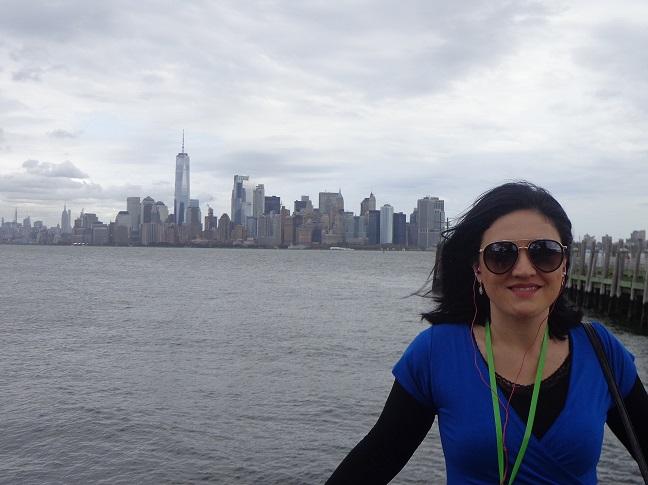

Details of Face 
And Statue’s Feet

Statue’s Model 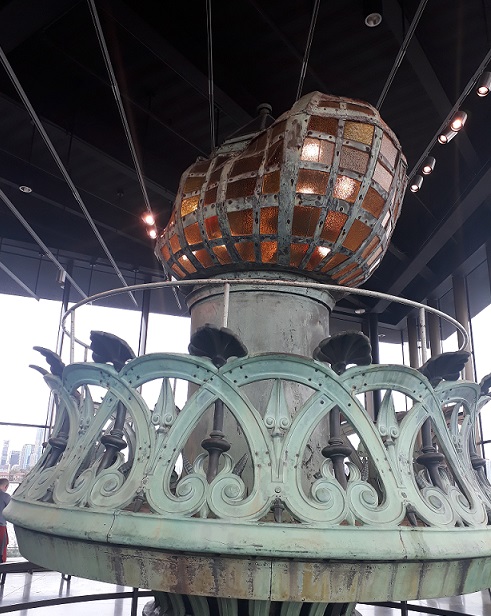
And torch

Remember that the Statue of Liberty was designated a UNESCO World Heritage Site in 1984 and more information is available at: www.nps.gov/stli/index.htm
Leaving there, we took the Ferry Boat and went to visit Ellis Island, which is close by and is part of the National Monument of the Statue of Liberty. This island was the main entry for immigrants to the United States in the 19th and early 20th centuries and in 1990 it became a museum.

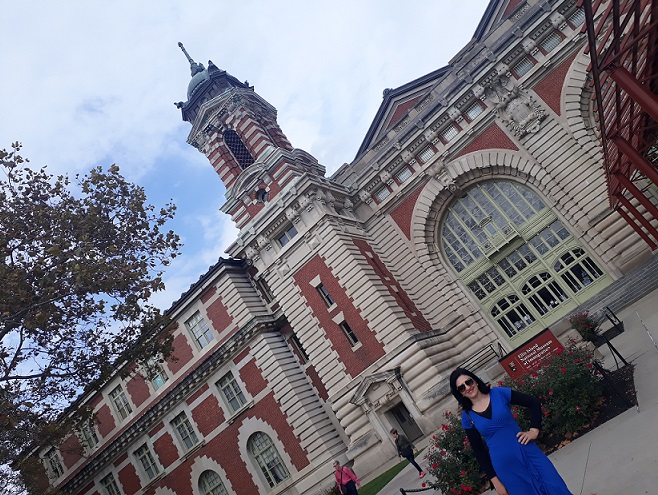
Ellis Island was screened, both medical and documentation, to see if immigrants could stay in American territory or not. This large hall was called the Records Room, and it was the place where the first inspection and records took place, and it received more than 5,000 people a day.
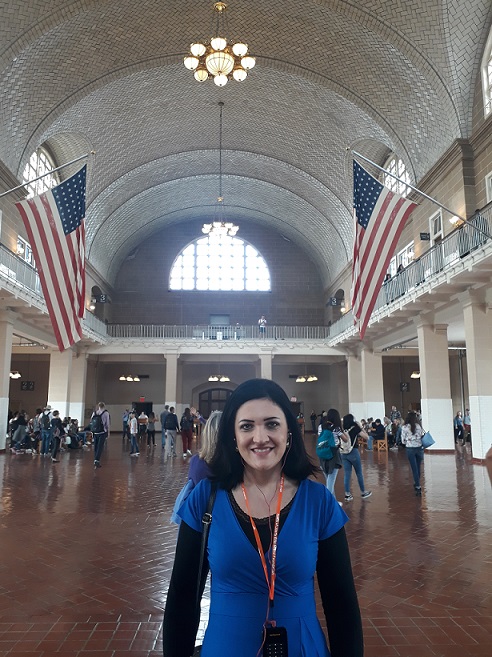
Ellis Island‘s historical collection is spread over the three floors of the museum, where you can see the medical instruments of the time, personal objects, the bedrooms, kitchen utensils, as well as many photos and other objects. And to find out more information just access the website: https://www.nps.gov/elis/index.htm
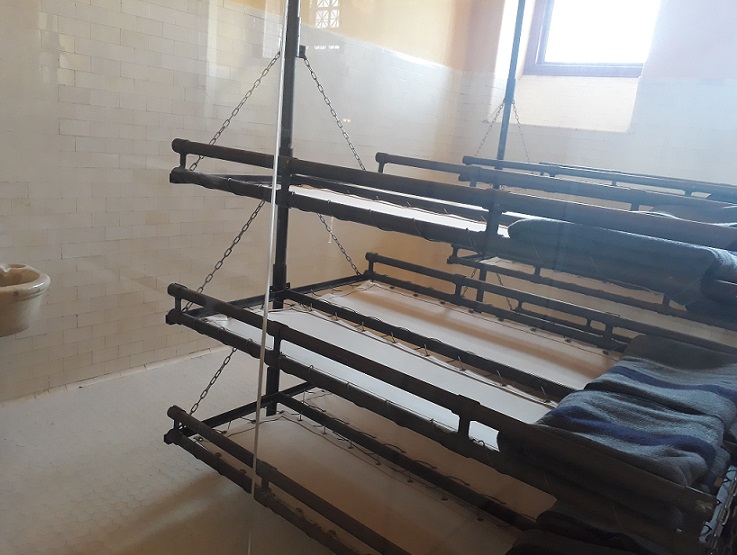
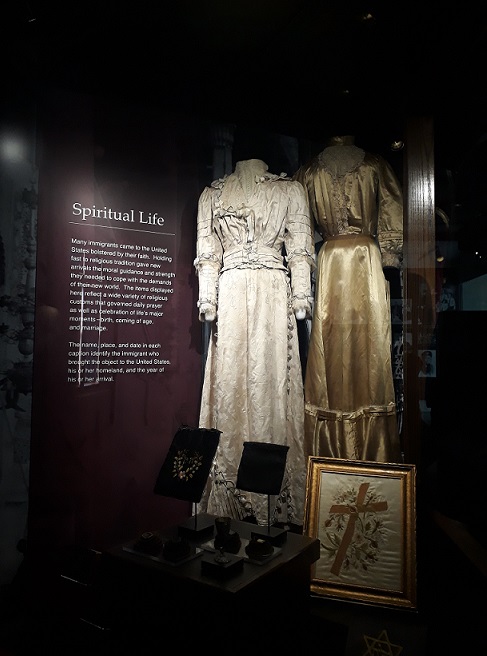

After visiting Ellis Island, we took the Ferry Boat and went back to Manhattan, where we went to visit the One World Trade Center Station that was reopened in 2016 and despite having as its official name “World Trade Center Transportation Hub” became known as The Oculus Station. It has a very futuristic design and was designed by the Spanish architect Santiago Calatrava (the same creator of the Museum of Tomorrow in Rio de Janeiro).
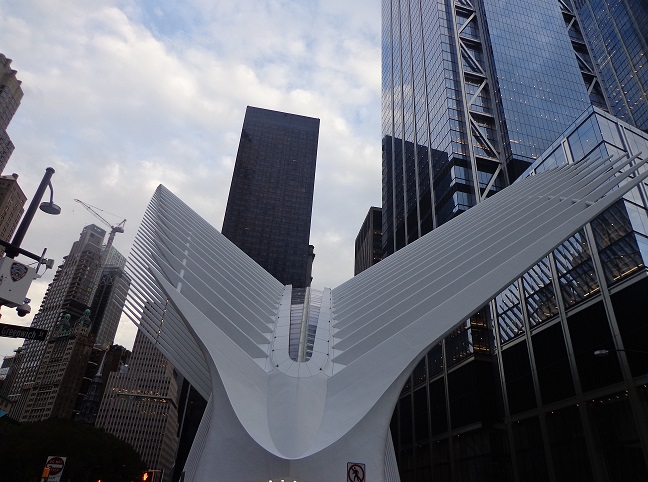
If externally, the One World Trade Center Station / The Oculus is already impressive, internally it is no different, it is huge, it connects trains, subways and the PATH system, in addition to housing even a shopping center, that’s right: the Westfield World Trade Center, which is one of the largest in the city. To find out more details just access the website: https://www.westfield.com/westfieldworldtradecenter

Inside The Oculus Station 
Since we are talking about the Train Station, I could not fail to mention the New York Subway, which is famous for operating 24 hours a day every day and being one of the most extensive and oldest in the world. It was opened in 1904 and currently has a total of 24 lines, distributed in 468 stations. On the Island of Manhattan, lines 1,2 and 3 – Red stand out; 4, 5 and 6 – Green and A, C and E – Blue. A tip to help you get around using this means of transport is to get a map at the hotel or at the stations or on the cell phone apps to already know exactly which is the right line to get to your destination. This link has the map of the metropolitan network of the entire city, (including Manhattan, Brooklyn, The Bronx and Quens) so you can get an idea of how it looks: https://new.mta.info/map/5256

Next to the “One World Trade Center” Station is “The National September 11 Memorial & Museum”, which is the complex formed by the “National September 11 Memorial” and the “Museum”. The 9/11 Memorial was opened on September 11, 2011 as a way to honor the victims of the September 11, 2001 terrorist attack that destroyed the Twin Towers. The Memorial project is by architect Michael Arad and landscaper Peter Walker and consists of two square pools with waterfalls (where the towers used to be), surrounded by trees in a large square. The symbology of this project is very touching, because the waterfalls would be the lives lost falling into the void left by their absence and on the edges of the pools are engraved the names of the 2,977 victims of the September 11 attack and of six more victims of the attack with a car -pump to the World Trade Center on February 26, 1993.
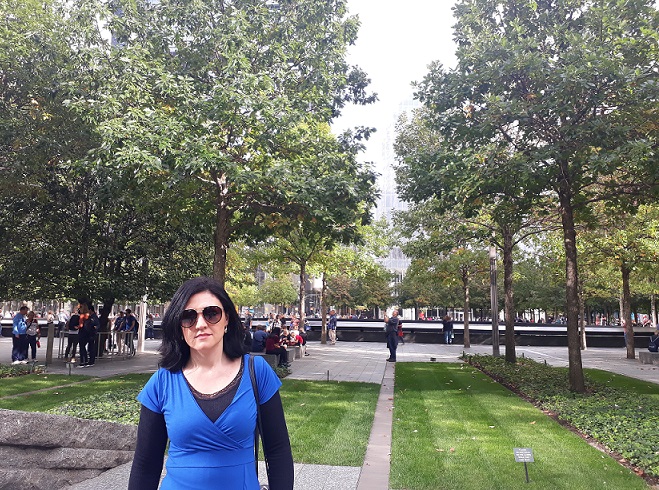
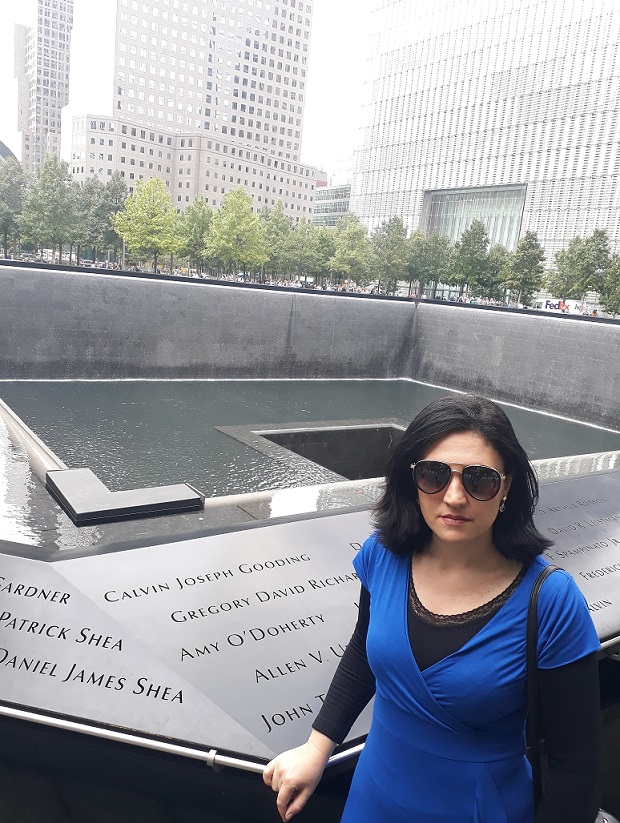
The pool 
in detail

It really breaks the heart to remember this tragedy and to know that it is still very much present in the memory and life of New Yorkers, it is a wound that has not healed and made the security protocols in the main tourist points of the city. intensified city with X-rays. and metal detector in the access to them. But in the midst of pain, hope also arises and an example of this is the Survivor Tree, a “Callery” pear tree that was badly damaged during the terrorist attack, leaving only one branch alive, but it was removed the rubble and taken for rehabilitation, returning to its current location in 2010, symbolizing resilience, rebirth and overcoming!!! The visit to the 9/11 Memorial (where the Survivor Tree and the Pools I mentioned are located) is free and more information on the website: https://www.911memorial.org/

Also in honor of the victims of the September 11, 2001 attack, the National September 11 Museum was created, which opened in 2014 with a collection of more than 10,000 pieces including twisted steel columns, a fire engine destroyed by the fall of the second tower, among many other objects.


Twistes steel Columns 
from Twin Towers

Fire engine… 
hit by the fall of the second tower
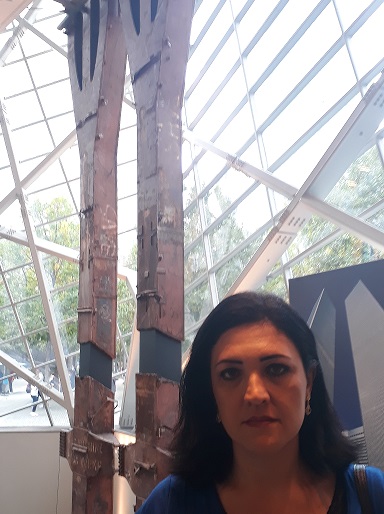
The National September 11 Museum was designed by the Architecture Company Davis Brody Bond and occupies an area of 107639.1 ft² at 68 ft below the ground, having access through a pavilion in which there are two columns rescued from the Twin Towers and also photos and explanations detailed information about the attack, including pictures of the Twin Towers (as they were before and during the attack).


And going down a little further we arrived at the room where there is a retaining wall of the Hudson River, which remained preserved even with the attacks and the “Last Column” that was removed from the rubble in May 2002. To find out more details about the National September 11 Museum just access: https://911tributemuseum.org/

Retaining wall 
Last Column

Admission to the National September 11 Museum was included in our CityPass New York, but if you are on account, you can buy it directly at: https://www.911memorial.org/visit/visit-museum-1 and costs US $ 26 (but there are some combos and discounts specified on the website).

Now to relieve the sadness and regret of the visit to the Memorial and Museum a little, nothing better than to contemplate a beautiful view of the city from the One World Observatory, which is in the One World Trade Center (World Trade Center 1 – WTC 1) , the iconic building of the new World Trade Center complex, which opened in 2014 and is the tallest building in the United States and one of the tallest in the world, with a height about 1776 ft. To know more details about WTC1 just access: https://www.wtc.com/about/buildings/1-world-trade-center


One World Trade Center was designed by the architect David Childs, in a post-modern style and has 104 floors, 69 of which are for offices, and others for restaurants and the observation deck that is the One World Observatory, occupying the floors 100°, 101° and 102°, and the ascent to the latter by the “Sky Pods” lifts lasts only one minute. That’s right, one minute to reach the 102nd floor of the tallest building in the city and contemplate this enchanting view and still knowing a little more about the history of New York on this route.

Arriving at the observation deck of the One World Observatory, we are welcomed by a short film at the See Forever Theater talking a little more about the city and at the end of this the screen rises and opens the beautiful New York skyline, with a spectacular view of the city. As the observatory is glazed and covered, you can enjoy the scenery regardless of the weather outside. To find out more details just access the website: https://www.oneworldobservatory.com/en-US
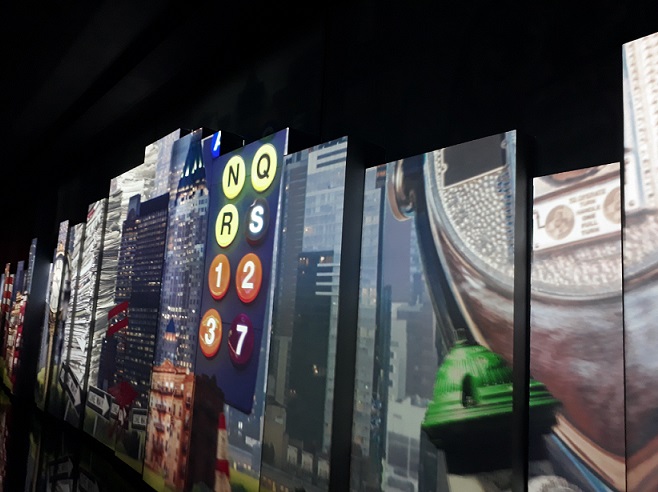

My suggestion is that you buy the ticket to visit the One World Observatory in advance to ensure that you are able to visit on the day you programmed in your itinerary (super precious tip from our dermatologist Dr. Renato who made our life easier) and also take it a late afternoon schedule, so you can enjoy the view during the day and also at night, which is what we did. Tickets can be purchased through the official website of One World Observatory: https://www.oneworldobservatory.com/en-US/buy-tickets . And to see a little bit of how our experience there was, just access the video link I posted on our Youtube Channel: https://youtu.be/soDYfPkC3zc
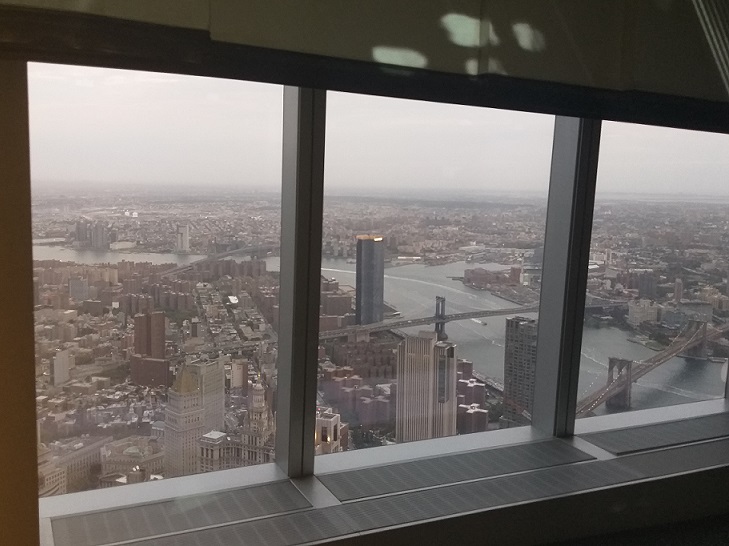
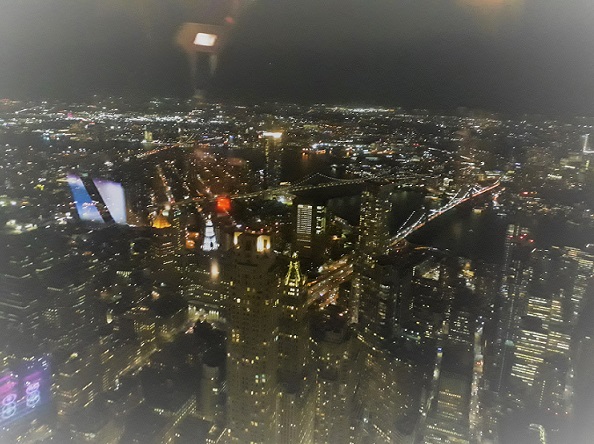
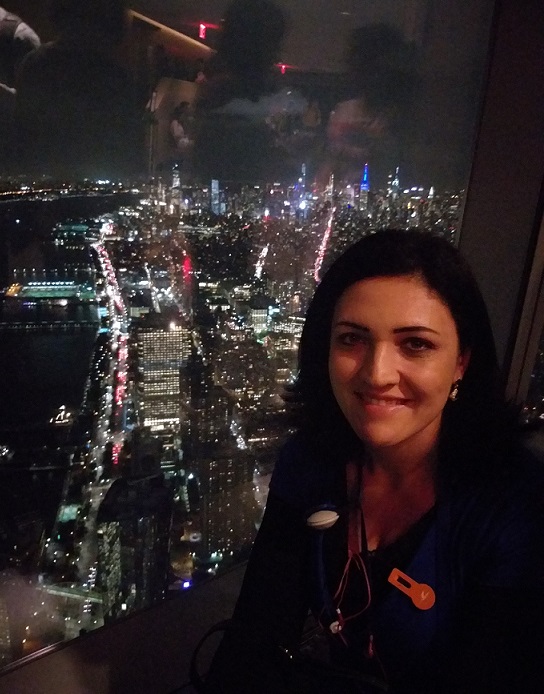
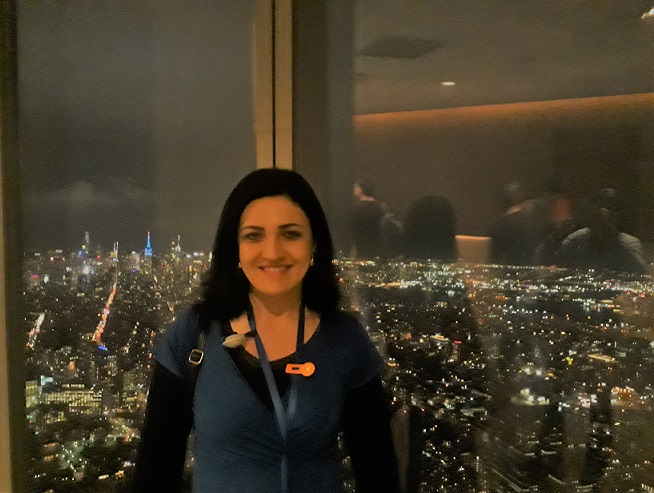
And to crown this incredible visit even more, you can have a drink or even dinner at the One Dine Restaurant & Bar with the New York Illuminated scenery in the background. Tell the truth, it’s really an unforgettable experience, isn’t it? You can book in advance and also have discounts on drinks depending on the ticket you purchase for the visit to One World Observatory. More details are on the website: https://www.oneworldobservatory.com/en-US/bar-restaurant

Are you thinking the night is over? Not yet … To really close the door with a golden key in one more night in New York we went to enjoy a nightclub in one of the most top clubs in the city (wonderful tip from our Dear Friend Valéria): PHD Lounge, which is on a terrace on the 12th floor, it has a sophisticated decor inspired by the 80s and provides us with a beautiful view of the Empire State Building and the city all lit up (just to reinforce the title of this post ?) to the sound of a lot of electronic and house music. You deserve a toast, don’t you? The PHD Lounge is located at 355 West 16th Street, Chelsea and more information is on the website: https://taogroup.com/venues/phd-lounge-new-york/


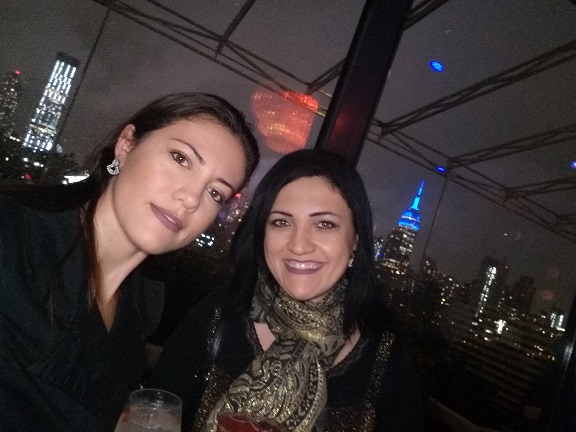
Cheers New York!!! 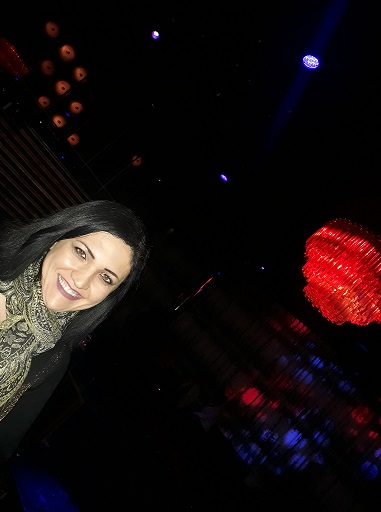
And in this nightclub atmosphere, we will finish posting our third day of tours in New York!!! Thank you very much for your company and I wait for you in the adventures of the next days!!! If you liked this post, share it with your friends so they can have fun too, and follow our social medias to know the news first hand: Instagram (@cadaviagemumabagagem) and Facebook (https://www.facebook.com/cadaviagemumabagagem/ ) and subscribe to our Youtube channel (Cada Viagem uma Bagagem): https://www.youtube.com/channel/UC5Q29-MYuWjvPH__wWhF42A . Remembering that to see the Full Itinerary for Day 4, just access the link: https://cadaviagemumabagagem.com/na-iluminada-e-poderosa-nova-york-dia-4/, where we will feel like we are on a real film set, visiting many movie sets, such as Central Park, American Museum of Natural History, among others…


